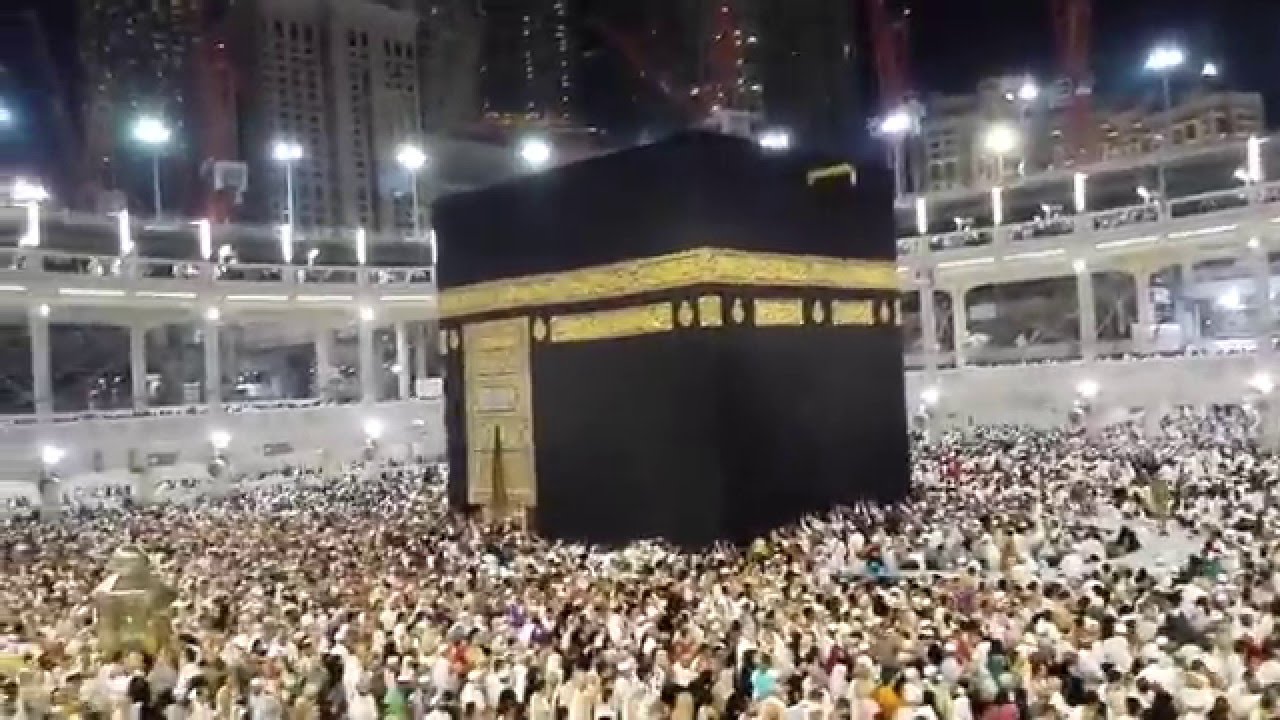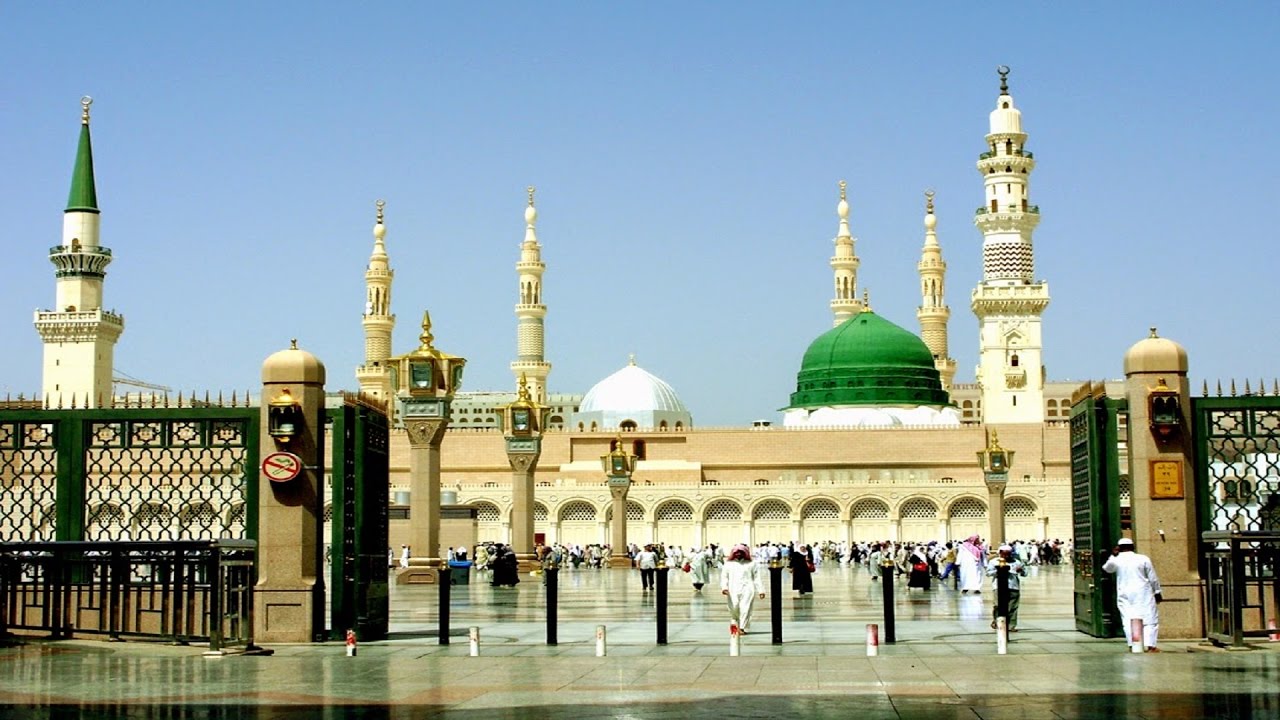Dars e Imam-Life
“Bismillahir Rahmannir Raheem””Al-Hamdu Lillaahi Rabbil ‘Aalameen was Salaatu was- Salaamu ‘Alaa Sayidinaa Muhammadin wa Aalihi wa Asabihi Ajma ‘een (tauheed- risalat- ahkirat and islam-iman-ihsan)
It is narrated on the authority of Anas, that the Prophet ﷺ said: The Prophets are
alive in their graves and praying [Musnad Abu Ya’la with Sahih Isnad,
Volume No.6, Page No. 147, Hadith No. 3425] – Imam al-Haythami after this
hadith said: Abu Ya’la and Bazzar narrated it and all the narrators of Abu
Ya’la are “THIQA” [Majma az Zawaid Volume 8, Page No. 387, Hadith No.
13812]The Prophet (Peace be upon him)
is saying that they remain alive “IN GRAVES WHERE THEY PRAY”-Remember prayer is Amal of “BOTH BODY AND
SOUL” had the Prophet been alive in Barzakh only (like everyone else) then
hadith would not have conditioned praying with grave. Above all it is
proven from Sahih Muslim that Prophet ﷺ on
his night journey saw Musa (a.s) praying “INSIDE HIS GRAVE”
Hadrat
Abu Hurayra (ra) narrates that the the Prophet ﷺ said: If
any one of you greets me, Allah returns my soul to me and I respond to the
greeting. [Sunnan Abu Dawood Hadith # 2043]
Imam Nawawi (rah) says of this hadith : It is narrated by Abu Dawud with a “SAHIH
CHAIN” [Riyadh us Saliheen 1/255, Hadith # 1402]
Again the Prophet ﷺ is saying
that “RUH IS RETURNED TO HIM” so I ask the –s, where is the Ruh
granted back? If he was alive in
Barzakh only then there was no point in saying that Ruh is returned back .. this
actually proves that Ruh is returned
back to body and the Prophet is actually alive.
Imam as-Subki (rah) narrates from Ibn Furaak (rah) in his Tabaqat
that Prophet ﷺ is alive
in his grave and “HE IS A PROPHET FOREVER” and this is based on “REALITY” not on
“MAJAAZ”.. Imam Zarqani (rah) explains: The
Prophet ﷺ is (Haqiqi Nabi) because he has “LIFE IN HIS GRAVE” and he offers
prayer with Adhaan and Iqamah. Ibn Aqeel al-Hanbli (rah) said: The Prophet
ﷺ spends time with his wives
and he combines with them in such a way which is better than worldly relation. “IBN AQEEL
SAID THIS BY TAKING AN OATH AND THIS IS SOMETHING OBVIOUS AND THERE IS NOTHING
ABSTAINING FROM IT” [Sharh al Zarqani ala Mawahib al-Laduniya of Imam
Qastallani (Volume No. 8, Page No. 358)]
Alhamdulillah, Quran, Sunnah and great Islamic scholars establish the “HAQIQI” life of Anbiya in their graves, not just Barzakhi as some ignorant claim. The life of the Prophet ﷺ in his grave, and also that of other Prophets is known to us as “definitive knowledge (ilman qat`iyyan)” the proofs regarding it are in “TAWATUR”
Imam Baihaqi (rah) wrote a Juzz on Life of Anbiya in their graves, the proofs regarding it are such as 1) It is narrated in Sahih Muslim by Anas Ibn Malik (ra) that the Messenger of Allah ﷺ said: “I passed by Moses during my Night journey and saw him offering prayer in his grave, (2) It is narrtaed by Abu Nua’ym in his Hiliya from Ibn Abbas (ra) who heard the Prophet ﷺ say: I passed by Moses and saw him standing in prayer, (3) It is narrated in Musnad of Abu Yal’a and by Baihaqi in his book “Hayat al Anbiya” from Anas (ra) that the Porphet ﷺ said: The Prophets are alive in their graves and praying [Imam Suyuti in Al Hawi lil Fatawi, Vol. 2, Page No. 264]
Hadrat Sheikh ‘Abd al-Haq “Muhaddith-e-Dehwli” states under the
commentary of this Hadith that:The Prophets of Allah are alive in their graves,
“JUST AS THEY WERE ALIVE IN THE
WORLD“[Ash’at al-Lam’at – Vol. 1 Pg. 576]
Sayyidina Abu Rimthah (RA) reported that he observed Allah’s Messenger ﷺ in a
pair of green garments[Dawud Book 9 Hadith 1678 ]
just to add even Sheikh Abul Haq
Muhadith Dehalvi writes that Prophet ﷺ also
used Green Ammama Sharif”[in his book in his book Zia’ul-Qaloub fi
Libass-e-Mahboub].
The vast majority of
‘Ulama agree that from among the Prophet’s favoured clothing is the turban.(Ibn
al-Jawzi in al-Wafa: 2/140, al-Maktabah al-Asriyyah and al-Qastalani in
al-Mawahib al-Laduniyyah: 2/184, al-Maktabah at-Tawfiqiyyah)
Shaikh Muhammad Ibn Jameel Zino (Imam Muhammad Ibn Saud Islamic University) in his book Al-Shamail Al-Muhammadiyyah on page #106) Headwear are symbols of nations and many Muslims imitate the unbelievers by wearing their head wear. In fact, covering their heads with a Turban, or even a scarf, is better for them and further from resembling the unbelievers.
Maulana Fazlul Karim (This is from his commentary of Mishkat vol#1
pg#630) “The holy Prophet (Sallallaahu ءlayhi Wasallam) used to wear a Turban
and he said that the angels also wear
it in the heavens and the turban protects the head and adorns the face.”
Murtada al-Zabidi (Rahimahullah) (In his commentary on Ghazali’s Ihya’ `ulum
al-din entitled Ithaf al-sadat al-muttaqin 3:253.) “The turban is desired (mustahabb) on Fridays for both the imam and
the congregation, and Nawawi said that it is desired for the imam to beautify his appearance (i.e. more than
everyone else), wear the turban, and wear a rida’ (jubba, a loose outer garment
or robe). The application of the Sunnah consists in winding the turban
on the head or on top of a qalansuwa (kufi). It is preferable to wear it large, but it is necessary to define its
length and width by what fits the wearer’s custom according to his time and place.
To add to this is disliked by the Law.”
Ibn Hajar Al-Asqalani (Rahimahullah) mentioned in FathulBaari pg#491 and
493 That Imaam Bukhari and Imaam Muslim
both wore Turbans. Note: that they were not arabs but took this practice as the
Sunna of Rasulullah ﷺ
Ibn Al-Jawzi and Ibn Al-Qayyim (In Rawdat al-muhibbin p. 225.) “Hasan al-Basri (Rahimahullah) wore a
Black Turban”
Imaam Nawawi (Rahimahullah) ( quoted from the biographical notice for
Imaam Nawawi in the Reliance of the Traveller.) “Imaam Nawawi all his life possessed only a thawb (long shirt) and a
turban”
Those who apply this hadith or Quranic verses revealed for idols on Muslims are without doubt khawarijiyas – “Ibn Umar considered the Khawarij and the heretics as the worst beings in creation, and he said:[B] They went to verses which were revealed about the disbelievers and applied them to the Believers.Bukhari Chapter Khawarjites.Ibn Hajr al Asqalani (rah) said in Fath ul bari: قلت : وسنده صحيح That its sanad is sahih.
Remembering Allah = in duniya ,limited period ,with people,for the sake of Allah,angels surround the zakireen,Allah announces forgiveness,people of love and marifat.
Allah remembering his slave= on arsh,un limited period,with angels,implants love in the selected hearts in duniya,entire angelic world starts loving that slave
When I want to talk to allah I say prayers and when I want that he talk to me I recite quran- Hazrath Ali(ra)
Make sure you forward this to others .


